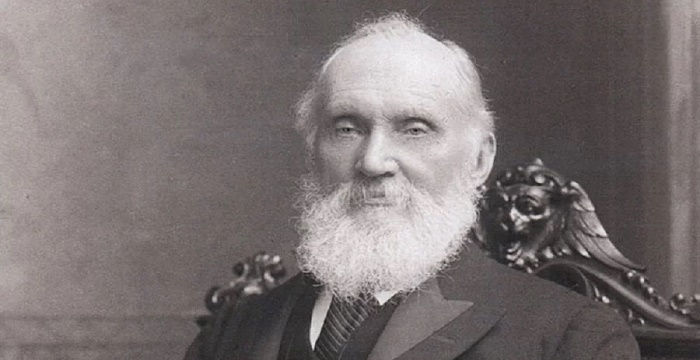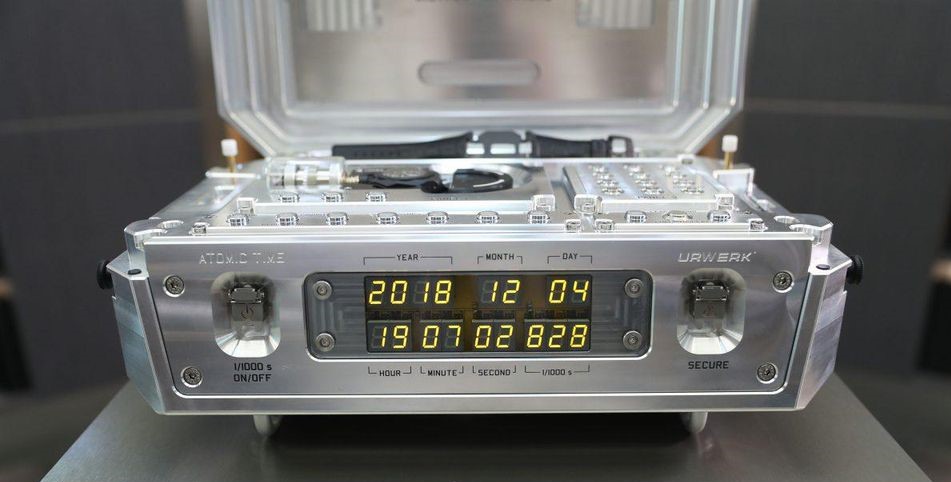What is Atomic Time?
Often, the smallest things can have the largest impact on our daily lives. All of our modern internet streaming services, gps systems, radio broadcasts, clocks, and wristwatches are no exception to this concept. Although timekeeping (specifically) has a longer history with larger mechanical works, deepening study of the atom in the 20th century saw time oriented tech becoming smaller and smaller—as well as incredibly more precise. From the mid-17th century, up until about the 1930s, the most accurate way to tell time was with pendulum clocks. However, the commercial introduction of a quartz-crystal oscillating movement—in 1927—made timekeeping even tighter. Not long after the introduction of this quartz technology, atomic timekeeping tech went into working development. But what does “atomic time” really mean? At this point, the omnipresence of this technology makes it almost mythical in its scope and ability to aid us in our daily industrious endeavors. So, ahead, we’ll look at some brief history involving this revolutionary time-telling technology—to pare down the picture of how it functions.

To begin: The concept of measuring time by triggering atomic transitions was first introduced to the scientific community in 1879 by Lord Kelvin. It took some time to actually put this concept into practice, though. In 1930 these transitions, aka “oscillations”, or movements between the nucleus of an atom—and its surrounding electrons—were utilized via magnetic resonance. This practical method, developed by Isidor Rabi, lit a flame under atomic research in timekeeping.
By 1945 Rabi made his first public suggestion that magnetic beam resonance could be used in clocks. Four years later, the first atomic clock was created by the U.S. National Bureau of Standards (now NIST) to demonstrate this budding technology. Though the invention was groundbreaking, this proto atomic clock was still not as accurate as the quartz-crystal oscillation movements of the time. The clock’s ammonia absorption mechanics really only served to prove that atomic time could be achieved; It wasn’t until 1955 that the caesium standard—utilizing an oscillation in the caesium-133 atom—was developed by UK scientists. This new measurement standard made atomic clocks smaller—and more accurate. In terms of this accuracy, this oscillation measurement-standard labels one second as 9,192,631,770 oscillations from ground state (it’s a whole lot of shakin’ going on). By 2004, the atomic clock was scaled down to 1/100th of any other atomic clock—via chip-scale technology.

Today, most atomic clocks detect caesium standard oscillations by sending atomic fountains, via lasers, into Earth’s magnetic field. If one could see these fountains, they would resemble a typical water fountain—on a much larger scale. In terms of scale, the International bureau of weights and measures issues 400 atomic clocks, in around 69 laboratories, to send out these fountains for atomic time measurements. This is done to establish an International Universal time (TAI). This International atomic time is coordinated with Universal (astronomical) Time to determine Coordinated Universal Time (UTC)—the time system currently used to determine local time zones. Furthermore, the UTC helps with everyday time-sensitive endeavors such as flight control and satellite GPS. As well, atomic wristwatches and clocks receive a daily radio signal from Ft. Collins Colorado—to keep U.S. citizens on time—based on the measurements taken by atomic clock laboratories.
Historically, the oscillating mass in timekeeping was something like a pendulum, a spring, or even the still-in-use quartz-crystal technology. Though this older tech is still used to today, the atomic clock’s invention and evolution changed the future of travel, space exploration, and timekeeping by measuring atomic oscillations. Moving into the 21st century—there’s an atomic clock being developed to send into deep space (as of 2015). This timekeeper is designed to better help us understand our place in the universe. So, whether you’re keeping atomic time on the wall—or on your wrist—you can count yourself a part of the future. Though the tech has been around for some time, it will continue to shape our relationship with the world—and our great celestial neighbors.
Times Ticking has been in operation for more than 30 years, since 1982. We have performed watch repair for customers both locally and internationally. If it Ticks! We KNOW it! Our team of watch repair technicians have a combined experience in watchmaking of over 120 years.

